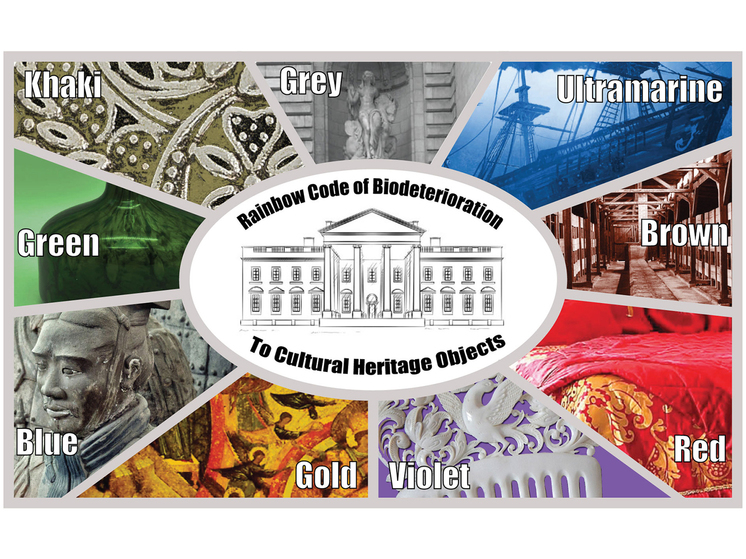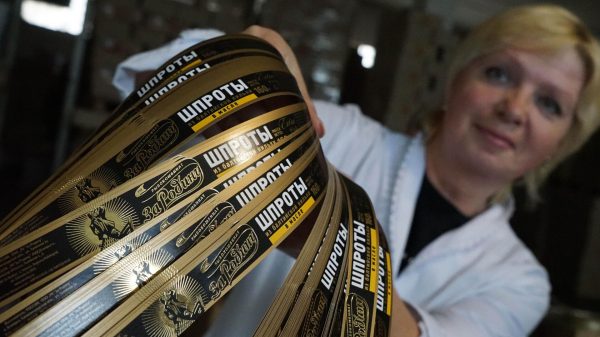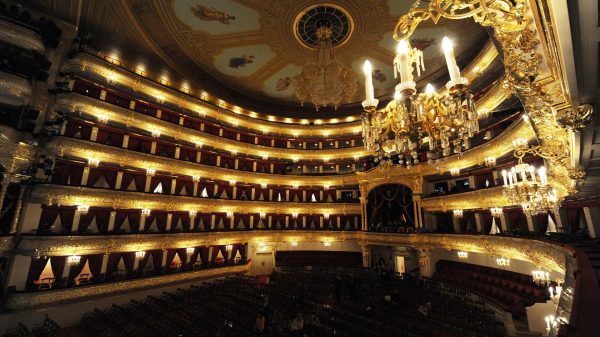A catalog of materials affected by destructive microorganisms, as well as means and methods of combating them, will appear
Microorganisms are invisible enemies capable of destroying even the most majestic architectural monuments and exquisite works of art. They do not spare paint on canvas, ancient frescoes, or even stone and metal. Scientists from the Federal Research Center of Biotechnology of the Russian Academy of Sciences have found a way to help restorers – they have begun to create a unique, updated catalog of types of materials of works of art, their biodamage and means of combating them. The new system will also be equipped with color tags for easier searching of the necessary sections.
 Color code of art. Figure courtesy of the Federal Research Center of Biotechnology RAS
Color code of art. Figure courtesy of the Federal Research Center of Biotechnology RAS
Of course, experienced restorers know how to “treat” ancient icons, paintings, sculptures, – all possible lists of fungicides and antibiotics for different materials are probably in the technical regulations. However, everyone knows that when storing works of art, conditions may change, and bacteria and fungi may periodically develop resistance (resistance) to certain types of antibacterial drugs used for a long time.
In this case, It is planned to create a new electronic catalog, where biologists who closely monitor the behavior of microorganisms will promptly update information on effective biocides.
For better memorization, all types of works of art – from icons to sculptures – will be marked with multi-colored marks depending on the materials from which they are made. Circular pictograms, painted in different colors, will indicate in what conditions the ancient monument should be stored or transported, as well as what means should be used by restorers to restore it in the event of “illness.”
Thus, the following colors were used to designate inorganic materials: for stone – gray, for metal – khaki, for glass – green, for clay – blue. Thus, stone temples, sculptures, engravings, jewelry, mosaic glass, ceramic tableware and other objects made of inorganic materials can be assigned to the appropriate color and indicated (for example, in a catalog) with the desired color pictogram.
For organic materials, purple, red and brown colors are used. So, for example, leather products and bone decorations will correspond to the color purple, canvases, church vestments, bandages for embalming mummies (all this material — fabric) will be designated in red, and objects made of wood, for example, wooden sculptures, icons, books, parchment, – classified as brown.

For art materials that may contain inorganic and organic components (oil, tempera paints, watercolors, plasticizers, drying oils, varnishes, etc.), scientists have introduced the gold color.
“Color marks – as road signs for restorers and museum workers, – explains the first author of the development, candidate of biological sciences, researcher at the group of genetic engineering of fungi Daria Avdanina. – They will help you quickly navigate and choose the right path to preserve fragile beauty.”
According to the biologist, for a cultural heritage object consisting of a single material, one circular pictogram will be used, consisting of one color assigned to the corresponding material. Cultural heritage objects consisting of several materials – several icons of different colors at once. For example, for Monomakh's hat, a pictogram of three colors will be used: gray (gems), khaki (gold) and purple (fur).
«In the early 2000s, a color (rainbow) code was developed for biotechnology industries. Medical biotechnology was called “red”, industrial biotechnology – «white», biotechnology of the world's ocean resources – «blue» etc., – Alexander Zhgun, co-author of the development, candidate of biological sciences, head of the group of genetic engineering of fungi, gives an analogy. – This classification has proven to be an effective open platform for adding new emerging biotechnology industries. Since one of the main directions of our scientific department is related to the diagnosis and prevention of biodestruction of works of art, by analogy with the color code for the biotechnology industries, we have developed a color platform for cultural heritage objects.





































































Свежие комментарии